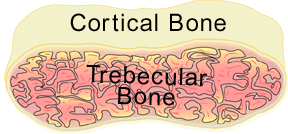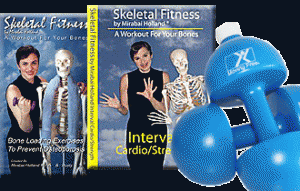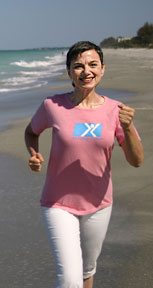 Bone healthy Diet? EEK! One more thing to worry about? What ever happened to “these are our golden years”?. Sounds like more bad news but it’s not. True, our bodies can lose up to 40% of their bone mass in the 10 years following menopause. And true, if we don’t do something we could easily end up with osteoporosis. But also true, the fix for this is both easy and delicious.
Bone healthy Diet? EEK! One more thing to worry about? What ever happened to “these are our golden years”?. Sounds like more bad news but it’s not. True, our bodies can lose up to 40% of their bone mass in the 10 years following menopause. And true, if we don’t do something we could easily end up with osteoporosis. But also true, the fix for this is both easy and delicious.
It’s important to get enough calcium, Vitamin D in your bone healthy diet. As we age bodies become less efficient at absorbing these nutrients.
Here are some recommendations.
If you’re 50 or over you should make sure you’re getting a total calcium intake of at least
1200 milligrams daily and a Vitamin D intake of at least 800 to 1000 units daily.
Here are some sources of dietary calcium:
- Dairy Products including milk, yogurt and cheese
- Nuts such as almonds and various green vegetables such as broccoli
- Fish with bones such as sardines, and mackerel and calcium fortified juices and cereals.
So, yogurt with fruit, almonds and maybe even a little cereal sounds like lunch. So does a salad with sardines, and a little raw broccoli. How about a nice piece of fish with a smaller salad. You might try some cheese and fruit with a glass of fruit juice. OK, wine. You get the idea. Get your calcium from food and you don’t have to take supplements. But if you do, most people have a better time digesting calcium citrate than calcium carbonate, but they both work fine.
Sources of Vitamin D include:
- Fatty fishes such as salmon and mackerel and Vitamin D enriched milk, juices and cereals.
- Although your skin can make vitamin D when exposed to sunlight, sun block prevents vitamin D production.
By now you’re making up your own healthy bones recipes so I don’t have to suggest a Salmon, mackerel, milk, fruit juice and cereal smoothie do I?
But if you’re like most people and wear sun block and don’t get enough D in your diet you’ll need to take a supplement to get your 800-1000 units of Vitamin D.
MORE BONE HEALTH DIET DO’s
Research suggests nutrients such as magesium, potassium, Vitamins A, K & C found in certain vegies and fruits may help foster better bones. It is recommended to eat about 12 ounces of fruit and 16 ounces of vegies daily.
Here is a list for your concoctions:
- Magesium include: Raisins, potatoes, sweet potatoes, plaintains, squash, artichokes, beet and collard greens.
- Potassium include: Oranges, orange juice, bananas, prunes, papaya, avocados and tomatoes.
- Vitamin A: Mangoes, cantaloupe, carrots, sweet potatoes and spinach
- Vitamin K: Spinach, brussels sprouts, cabbage, kale, collard, turnip and mustard greens.
- Vitamin C: Oranges, pineapples, payayas, grapefruits, lemons, strawberries, red and green peppers, broccoli and brussel sprouts and cauliflower.
BONE HEALTHY DIET NO’s
One bit of bad news is too much alcohol or caffeine can add to bone loss; and soft drinks particularly colas that have both caffeine and phosphorous (bad for your bones) may be a double whammy.
So that’s my quickie eating for your bones report. Don’t try that smoothie; it’s nasty.
 EASE IN, BECOME MOBILE, GET STRONG, LIVE LONG!
EASE IN, BECOME MOBILE, GET STRONG, LIVE LONG!
SHOP NOW GET 25% OFF ALL MIRABAI’S PRODUCTS PUT CODE: FABWKOUTS CLICK HERE
FREE SHIPPING TOO!
Follow Mirabai Holland: Certified Health Coach & Certified Exercise Physiologist:
Follow Mirabai Holland on











